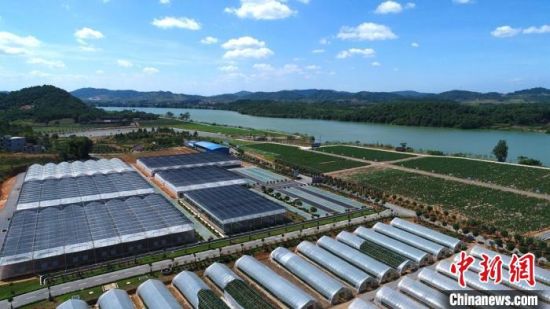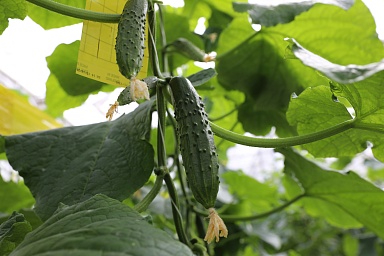In winter, in Sanjia Village, Maozhu Town, Qiyang City, Hunan Province, the blue waves of the Xiangjiang River going north around the village are rippling. Sanjia Village used to be dirty and messy, and it was the famous “Longxugou” in the local area. As the village became more beautiful, agricultural tourism flourished. Since 2019, Sanjia Village has been rated as a national rural tourism key village, a national vegetable standard garden, and a national 3A-level tourist attraction, becoming a veritable “village living room”.
Sanjia Village was once a designated poverty-stricken village in Hunan Province. Xiao Meilan, a 58-year-old villager, recalled that in those years, she and her husband Mao Xiaobing farmed the land at home. Because the varieties they planted were not suitable for the market, coupled with poor planting techniques and low yields, not only did they not make money, they often lost money. The two are too old and have no skills. They want to go out to work but are afraid that they will not find a suitable job.
In 2016, Sanjia Village introduced Dehui Modern Agriculture Development Co., Ltd., which is engaged in pollution-free and efficient agricultural production, to develop the organic vegetable industry. Xiao Meilan and her husband transferred 7.6 mu of cultivated land to the company, participated in 6 pre-job trainings, and entered the organic vegetable base of Dehui Farm to work as a worker in the IoT smart greenhouse. From the farmers who used to hold hoes and work in the sun and rain, they have become “new farmers” who farm with mobile phones. The combined annual income of the two is more than 70,000 yuan, and the company also purchased resident endowment insurance and personal accident insurance for them.
Ten years ago, Xiao Yiwen’s family of four lived in a house of less than 40 square meters. Later, he and his wife worked in the organic vegetable base of Dehui Farm. In 2020, Xiao Yiwen and his wife will build a 3-story building in a concentrated housing site in the village.
In recent years, Sanjia Village has also taken the opportunity of the Xiangjiang River Basin to return farmland to forests and wetlands as an opportunity to return 1,136 mu of farmland to forests and wetlands, and planted more than 30 types of forest and grass species and economic crops such as crabapple, crape myrtle, Xianglian, and candied oranges to create a “three seasons” Wetland scenery with flowers and evergreen in all seasons; 38,000 square meters of hollow houses, dilapidated houses, and dry toilets in the village were demolished, and tap water and flushing toilets were used by every household; toilet excrement was collected and treated in a centralized manner, with an annual output of more than 3,650 tons Liquid organic fertilizer, through the “water and fertilizer integration” automatic irrigation system of Dehui Farm’s organic vegetable base, realizes ecological recycling.
The excellent ecological environment and high-tech planting mode of Sanjia Village attract people to check in and study. Rapeseed Flower Festival, Lantern Festival, etc. have been held successively in the village, and the agricultural tourism industry has flourished. Villagers have set up farmhouses and agricultural product sales stores one after another.
Sanjia Village has become an enviable new countryside from a poor and backward mountain village. According to Ma Chunsheng, Secretary of the General Party Branch of Sanjia Village, Sanjia Village will establish and promote the rural revitalization goals of “integration of villages and enterprises, integration of agriculture and tourism, branding of industries, professionalization of villagers, livability of villages, and warmth of services”. Good ecology and modern agricultural industry, adhere to rural tourism as the starting point, and strive to create an agricultural park that integrates popular science education, fruit and vegetable picking, sports development, field camping, special food and healthy homestays, and deeply integrates the primary, secondary and tertiary industries. Brigade Pastoral Complex.
This year, Sanjia Village has received a total of 200,000 tourists and realized tourism revenue of 30 million yuan, a year-on-year increase of 15% and 10% respectively. (use up)
A source: http://www.hn.chinanews.com.cn












